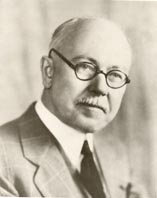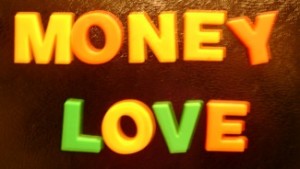 ”Perhaps the most brilliant marketing mind to ever walk the planet. He took the principles we all use to catapult our businesses to new heights. The difference is we are using technology, while he used the pen and paper. He was a mastermind marketer and one of the world’s most savvy advertisers. Everyone can learn a million lessons from reading and re-reading Scientific Advertising.
”Perhaps the most brilliant marketing mind to ever walk the planet. He took the principles we all use to catapult our businesses to new heights. The difference is we are using technology, while he used the pen and paper. He was a mastermind marketer and one of the world’s most savvy advertisers. Everyone can learn a million lessons from reading and re-reading Scientific Advertising.
Chapter 15
Scientific Advertising — Test campaigns
Almost any questions can be answered, cheaply, quickly and finally, by a test campaign. And that’s the way to answer them not by arguments around a table. Go to the court of last resort the buyers of your product.
On every new project there comes up the question of selling that article profitably. You and your friends may like it, but the majority may not. Some rival product may be better liked or cheaper. It may be strongly entrenched. The users won away from it may cost too much to get.
People may buy and not repeat. The article may last too long. It may appeal to a small percentage, so most of your advertising goes to waste.
There are many surprises in advertising. A project you will laugh at may make a great success. A project you are sure of may fall down. All because tastes differ so. None of us know enough peoples desires to get an average viewpoint.
In the old days, advertisers ventured on their own opinions. The few guessed right, the many wrong. Those were the times of advertising disaster. Even those who succeeded came close to the verge before the tide is turned. They did not know their cost per customer or their sale per customer. The cost of selling might take a long time to come back. Often it never came back.
Now we let the thousands decide what the millions will do. We make a small venture, and watch cost and result. When we learn what a thousand customers cost, we know almost exactly what a million will cost. When we learn what they buy, we know what a million will buy.
We establish averages on a small scale, and those averages always hold. We know our cost, we know our sale, we know our profit or our loss. We know how soon our cost comes back. Before we spread out, we prove our undertaking absolutely safe. So there are today no advertising disasters piloted by men who know.
Perhaps we try out our project in four or five towns. We may use a sample offer or a free package to get users started quickly. We learn in this way the cost per customer started. Then we wait and see if users buy those samples. If they do, will they continue? How much will they buy? How long does it take for the profit to return our cost of selling?
A test like this may cost $3,000 to $5,000. It is not all lost, even when the product proves unpopular. Some sales are made. Nearly every test will in time bring back the entire cost.
Sometimes we find that the cost of the advertising comes back before the bills are due. That means that the product can be advertised without investment. Many a great advertiser has been built up without any cost whatever beyond immediate receipts. That is an ideal situation.
On another product it may take three months to bring back the cost with a profit. But one is sure of his profit in that time. When he spreads out he must finance accordingly.
Think what this means. A man has what he considers an advertising possibility. But national advertising looks so big and expensive that he dare not undertake it.
Now he presents it in a few average towns, at a very moderate cost. With almost no risk whatever. From the few thousand he learns what the millions will do. Then he acts accordingly. If he then branches he knows to a certainty just what his results will be.
He is playing on the safe side of a hundred to one shot. If the article is successful, it may make him millions. If he is mistaken about it, the loss is a trifle.
These are facts we desire to emphasize and spread. All our largest accounts are now built in this way, from very small beginnings. When businessmen realize that this can be done, hundreds of others will do it. For countless fortune-earners now lie dormant.
The largest advertiser in the world makes a business of starting such projects. One by one he finds out winners. Now he has twenty-six, and together they earn many millions yearly.
These test campaigns have other purposes. They answer countless questions which arise in business.
A large food advertiser felt that his product would be more popular in another form. He and all his advisers were certain about it. They were willing to act on this supposition without consulting the consumers, but wiser advice prevailed.
He inserted an ad in a few towns with a coupon, good at any store for a package of the new-style product. Then he wrote to the users about it. They were almost unanimous in their disapproval.
Later the same product was suggested in still another form. The previous verdict made the change look dubious. The advertiser hardly thought a test to be worthwhile. But he submitted the question to a few thousand women in a similar way and 91 percent voted for it. Now he has a unique product which promises to largely increase his sales.
These tests cost about $1,000 each. The first one saved him a very costly mistake. The second will probably bring him large profits.
Then we try test campaigns to try out new methods on advertising already successful. Thus we constantly seek for better methods, without interrupting plans already proved out.
In five years for one food advertiser we tried out over fifty separate plans. Every little while we found an improvement, so the results of our advertising constantly grew. At the end of five years we found the best plan of all. It reduced our cost of selling by 75 percent. That is, it was four times more effective than the best plan used before.
That is what mail order advertisers do – try out plan after plan to constantly reduce the cost. Why should any general advertiser be less business-like and careful?
Another service of the test campaign is this: An advertiser is doing mediocre advertising. A skilled advertising agent feels that he can greatly increase results. The advertiser is doubtful. He is doing fairly well. He has alliances which he hesitates to break. So he is inclined to let well enough alone.
Now the question can be submitted to the verdict of a test. The new agent may take a few towns, without interfering with the general campaign. Then compare his results with the general results and prove his greater skill.
Plausible arguments are easy in this line. One man after another comes to an advertiser to claim superior knowledge or ability. It is hard to decide, and decisions may be wrong.
Now actual figures gained at a small cost can settle the question definitely. The advertiser makes no commitment. It is like saying to a salesman, “Go out for a week and prove.” A large percentage of all the advertising done would change hands if this method were applied.
Again we come back to scientific advertising. Suppose a chemist would say in an arbitrary way that this compound was best, or that better. You would little respect his opinion. He makes tests – sometimes hundreds of tests – to actually know which is best. He will never state a supposition before he has proved it. How long before advertisers in general will apply that exactness to advertising?
Chapter 16
Scientific Advertising – Leaning on dealers
We cannot depend much in most lines on the active help of jobbers or of dealers. They are busy. They have many lines to consider. The profit on advertised lines is not generally large. And an advertised article is apt to be sold at cut prices.
The average dealer does what you would do. He exerts himself on brands of his own, if at all. Not on another mans brand.
The dealers will often try to make you think otherwise. He will ask some aid or concession on the ground of extra effort. Advertisers often give extra discounts. Or they make loading offers—perhaps one case free in ten—in the belief that loaded dealers will make extra efforts.
This may be so in rare lines, but not generally. And the efforts if made do not usually increase the total sales. They merely swing trade from one store to another.
On most lines, making a sale without making a convert does not count for much. Sales made by conviction by advertising are likely to bring permanent customers. People who buy through casual recommendations do not often stick. Next time someone else gives other advice.
Revenue which belongs to the advertiser is often given away without adequate return. These discounts and gifts could be far better spent in securing new customers.
Free goods must be sold, and by your efforts usually. One extra case with ten means that advertising must sell ten percent more to bring you the same return. The dealer would probably buy just as much if you let him buy as convenient.
Much money is often frittered away on other forms of dealer help. Perhaps on window or store displays. A window display, acting as a reminder, may bring to one dealer a lions share of the trade. Yet it may not increase your total sales at all.
Those are facts to find out. Try one town in one way, one in another. Compare total sales in those towns. In many lines such tests will show that costly displays are worthless. A growing number of experienced advertisers spend no money on displays.
This is all in line of general publicity, so popular long ago. Casting bread upon the waters and hoping for its return. Most advertising was of that sort twenty years ago.
Now we put things to the test. We compare cost and result on every form of expenditure. It is very easily done. Very many costly wastes are eliminated by this modern process.
Scientific advertising has altered many old plans and conceptions. It has proved many long established methods to be folly. And why should we not apply to these things the same criterion we apply to other forms of selling? Or to manufacturing costs?
Your object in all advertising is to buy new customers at a price which pays a profit. You have no interest in centering trade at any particular store. Learn what your consumers cost and what they buy. If they cost you one dollar each, figure that every wasted dollar costs you a possible customer.
Your business will be built in that way, not by dealer help. You must do your own selling, make your own success. Be content if dealers fill the orders that you bring. Eliminate your wastes. Spend all your ammunition where it counts for most.
Chapter 17
Scientific Advertising — Individuality
A person who desires to make an impression must stand out in some way from the masses and in a pleasing way. Being eccentric, being abnormal is not a distinction to covet. But doing admirable things in a different way gives one a great advantage.
So with salesmen, in person or in print. There is uniqueness which belittles and arouses resentment. There is refreshing uniqueness which enhances, which we welcome and remember. Fortunate is the salesman who has it.
We try to give each advertiser a becoming style. We make him distinctive, perhaps not in appearance, but in manner and in tone. He is given an individuality best suited to the people he addresses.
One man appears rugged and honest in a line where rugged honesty counts. One may be a good fellow where choice is a matter of favor. In other lines the man stands out by impressing himself as an authority.
We have already cited a case where a woman made a great success in selling clothing to girls, solely through a created personality which won.
That’s why we have signed ads sometimes – to give them a personal authority. A man is talking—a man who takes pride in his accomplishments—not a “soulless corporation.” Whenever possible we introduce a personality into our ads. By making a man famous we make his product famous. When we claim an improvement, naming the man who made it adds effect.
Then we take care not to change an individuality which has proved appealing. Before a man writes a new ad on that line, he gets into the spirit adopted by the advertiser. He plays a part as an actor plays it.
In successful advertising great pains are taken to never change our tone. That which won so many is probably the best way to win others. Then people come to know us. We build on that acquaintance rather than introduce a stranger in guise. People do not know us by name alone, but by looks and mannerisms. Appearing different every time we meet never builds up confidence.
Then we don’t want people to think that salesmanship is made to order. That our appeals are created, studied, artificial. They must seem to come from the heart, and the same heart always, save where a wrong tack forces a complete change.
There are winning personalities in ads as well as people. To some we are glad to listen, others bore us. Some are refreshing, some commonplace. Some inspire confidence, some caution.
To create the right individuality is a supreme accomplishment. Then an advertisers growing reputation on that line brings him ever-increasing prestige. Never weary of that part. Remember that a change in our characteristics would compel our best friends to get acquainted all over.
Chapter 18
Scientific Advertising – Negative advertising
To attack a rival is never good advertising. Don’t point out others’ faults. It is not permitted in the best mediums. It is never good policy. The selfish purpose is apparent. It looks unfair, not sporty. If you abhor knockers, always appear a good fellow.
Show a bright side, the happy and attractive side, not the dark and uninviting side of things. Show beauty, not homeliness; health, not sickness. Don’t show the wrinkles you propose to remove, but the face as it will appear. Your customers know all about wrinkles.
In advertising a dentifrice, show pretty teeth, not bad teeth. Talk of coming good conditions, not conditions which exist. In advertising clothes, picture well-dressed people, not the shabby. Picture successful men, not failures, when you advertise a business course. Picture what others wish to be, not what they may be now.
We are attracted by sunshine, beauty, happiness, health, success. Then point the way to them, not the way out of the opposite.
Picture envied people, not the envious.
Tell people what to do, not what to avoid.
Make your every ad breath good cheer. We always dodge a Lugubrious Blue. Assume that people will do what you ask. Say, “Send now for this sample.” Don’t say, “Why do you neglect this offer?” That suggests that people are neglecting. Invite them to follow the crowd.
Compare the results of two ads, one negative, one positive. One presenting the dark side, one the bright side. One warning, the other inviting. You will be surprised. You will find that the positive ad out pulls the other four to one, if you have our experience.
The “Before and after taking” ads are follies of the past. They never had a place save with the afflicted. Never let their memory lead you to picture the gloomy side of things.
Chapter 19
Scientific Advertising – Letter writing
This is another phase of advertising which all of us have to consider. It enters, or should enter, into all campaigns. Every businessman receives a large number of circular letters. Most of them go direct to the wastebasket. But he acts on others, and others are filed for reference.
Analyze those letters. The ones you act on or the ones you keep have a headline which attracted your interest. At a glance they offer something that you want, something you may wish to know.
Remember that point in all advertising.
A certain buyer spends $50,000,000 per year. Every letter, every circular which comes to his desk gets its deserved attention. He wants information on the lines he buys.
But we have often watched him. In one minute a score of letters may drop into the wastebasket. Then one is laid aside. That is something to consider at once. Another is filed under the heading “Varnish.” And later when he buys varnish that letter will turn up.
That buyer won several prizes by articles on good buying. His articles were based on information. Yet the great masses of matter which came to him never got more than a glance.
The same principles apply to all advertising. Letter writers overlook them just as advertisers do. They fail to get the right attention. They fail to tell what buyers wish to know.
One magazine sends out millions of letters annually. Some to get subscriptions, some to sell books. Before the publisher sends out five million letters he puts a few thousands to test. He may try twenty-five letters, each with a thousand prospects. He learns what results will cost. Perhaps the plan is abandoned because it appears unprofitable. If not, the letter which pays best is the letter that he uses.
Just as men are doing now in all scientific advertising.
Mail order advertisers do likewise. They test their letters as they test their ads. A general letter is never used until it proves itself best among many actual returns.
Letter writing has much to do with advertising. Letters to inquirers, follow-up letters. Wherever possible they should be tested. Where that is not possible, they should be based on knowledge gained by tests.
We find the same difference in letters as in ads. Some get action, some do not. Some complete a sale, some forfeit the impression gained. These are letters, going usually to half-made converts, that are tremendously important.
Experience generally shows that a two-cent letter gets no more attention than a one-cent letter. Fine stationery no more than poor stationery. The whole appeal lies in the matter.
It has been found that fine stationery and pamphlets lessen the effect. They indicate an effort to sell on other lines than merit. That has the same effect in letters as in ads.
A letter which goes to an inquirer is like a salesman going to an interested prospect. You know what created that interest. Then follow it up along that line, not on some different argument. Complete the impression already created. Don’t undertake another guess.
In a letter as in ads, the great point is to get immediate action. People are naturally dilatory. They postpone, and a postponed action is too often forgotten.
Do something if possible to get immediate action. Offer some inducement for it. Or tell what delay may cost. Note how many successful selling letters place a limit on an offer. It expires on a certain date. That is all done to get prompt decision, to overcome the tendency to delay.
A mail order advertiser offered a catalog. The inquirer might send for three or four similar catalogs. He had that competition in making a sale.
So he wrote a letter when he sent his catalog, and enclosed a personal card. He said, “You are a new customer, and we want to make you welcome. So when you send your order please enclose this card. The writer wants to see that you get a gift with order – something you can keep.”
With an old customer he gave some other reason for the gift. The offer aroused curiosity. It gave preference to his catalog. Without some compelling reason for ordering elsewhere, the woman sent the order to him. The gift paid for itself several times over by bringing larger sales per catalog.
The ways for getting action are many. Rarely can one way be applied to two lines. But the principles are universal. Strike while the iron is hot. Get a decision then. Have it followed by prompt action when you can.
You can afford to pay for prompt action rather than lose by delay. One advertiser induced hundreds of thousands of women to buy six packages of his product and send him the trademarks, to secure a premium offer good only for one week.
There you have it. The secrets to successful marketing and advertising
Check back soon as we reveal chapters 20-21











